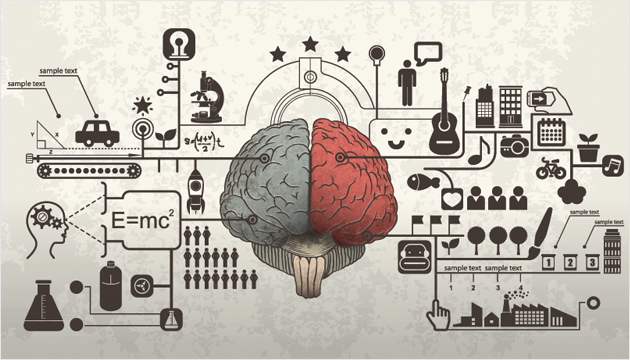
A while back, I was engaged in the development of a new software solution in my day job. In one of the first days of development, a colleague created a wiki page, the purpose of which was to discover the best method for the design of one of the essential parts of a new solution. He naively thought that allowing people to discuss the design publicly would stimulate creativity and eventually lead to finding the best possible solution.
Sadly, he was wrong.
The discussion quickly degenerated into an infinite stream of accusations, judgments or impolite verbal aggression. This was not an isolated case. I have seen the same violent type of communication occurred over and over again in different situations, in different workplaces. I asked myself a question. As human beings are we even capable of communicating non-violently in our workplaces?
New rules of marriage work
Last year, when I finished reading “The New Rules of Marriage”, a famous book by family therapist Terrence Real, I was devastated. In his book, Real described five powerful “losing strategies” which usually make our life miserable. He also described some rules on how to avoid utilizing strategies mentioned above. I was overwhelmed because these rules were so simple, but at the same time it was so hard to introduce them into our lives. At the same time, I felt amused when I discovered how many examples of the use of losing strategies actually exist in my workplace.

One of the key strategies described by Real was “needing to be right”. This is not surprising. As humans, we generally think in the category of “I”. We tend to believe that in each discussion or negotiation someone has to win and someone has to lose. Our internal debater causes us to think that we need to prove something or convince someone that our opinion is correct. Our internal lecturer forces us to think that others actually need lecturing. Finally, on the other hand, we are so focused on our own ideas that we tend to become bored when listening to other people.
Do you need proof? Take an exercise. Attend a few meetings in your company and start counting how many times people use the word “but”.
- Yes, yes, I understand you, but…
- I know what you are saying and I respect that, but…
- I hear you, but…
Even if we say that we understand, respect and hear we are cheating a bit. All we do is wait for another person to make a short pause to take a breath. Then, (at last!) we can take our turn and continue to convince the “opponent”.
If it does not sound familiar to you, I encourage you to take another exercise. Attend a meeting and count how many times you have tried to interrupt someone just to bring up your own opinion. How much effort have you put on actively hearing what the other person has to say, and compare it with the effort you have put on focusing on forming your own opinion?
Thinking fast and the halo effect
The funny thing is that using contentious communication has a pretty rational foundation deeply rooted in our minds. Unless you are a psychopath you don’t want to humiliate another person. On the contrary, we want the best for him/her and at the same time the best for our group, team, company or business as a whole. We tend to build a very special chain of reasoning:
- My idea is good.
- And I want the best for my company and team.
- Everyone else also wants the best for our company and team.
- So, I need to open their eyes and allow them to see the goodness of my idea!
What we neglect is that our reasoning is usually counterproductive, and pushes us into a win-lose strategy.
System 1 and System 2
One of the opinions I have seen in the wiki page which I mentioned above looked like this:
My dear colleagues, first of all I must say that the solution you have chosen is terrible! Why? …
After the question “why”, the author described all his doubts and fears related to the chosen solution. But it didn’t matter. Why? Because many of the other designers probably formulated their own opinions about the author and his thoughts based on their reading this very first judgmental sentence.
Daniel Kahneman in his famous book “Thinking, Fast and Slow” describes the concept of two “systems” which are inseparable parts of our behavioral patterns. The first is fast, intuitive and focused on identifying associations, the second is more or less slow and analytical. As human beings we are generally lazy, so we prefer using the first one.

When the author of the previously mentioned comment describes his objections to the solution we are lazy enough to unconsciously swap questions asked. Instead of answering the question: “Are his concerns reasonable and worth addressing?”, we are unconsciously answering the question: “Do I like this guy? Is he trustable?”. If someone says that your choice is terrible, the answer is quite simple: you don’t like the guy. Hence, from the very beginning your mind is setting you against him!
The only thing we can do, in order to escape this vicious circle, is to separate what we think about the person or the form in which she or he has described his thoughts, from what the actual essence is of the opinion. We need to force our System Two to work! It is hard, but interestingly, Kahneman says that frowning helps. So, whenever you will see this kind of an opinion followed by few paragraphs of text, frown and try to focus on someone’s doubts and fears. Eventually, maybe they will be worth discussing.
Judgments everywhere
It is so hard to make this kind of separation because saying that something is terrible is terribly judgmental. Generally, people don’t like to be judged but at the same time they judge others all the time. In his wonderful book “Nonviolent Communication”, Marshall Rosenberg identifies judgments as one of the foundations of being “violent”. Judgments provoke either attack or defense or both — sometimes done simultaneously.
One of my colleagues has a habit of attending meetings and saying once in a while this beautiful sentence: “You know guys, the truth is that…”. Generally, after the word “that” comes his opinion on a particular subject. From his perspective, this is the end of the story. Yet he already described the truth and all that is left to others is to acknowledge it. But it doesn’t happen this way at all. Why? Even if he has good ideas, people are not connected with him — it is still his personal truth. Even though these kinds of judgments from the speaker’s point of view are intended to finish the discussion, they rarely do. On the contrary, they often add fuel to the fire.
But this isn’t the only thing that Rosenberg points out. Along with judgments, we very often denial the responsibility for our actions and imply a lack of choice. Psychologist gives a very extreme example of Nazi officer Adolf Eichman, who denied the responsibility for all his and his fellow officers actions by using something called “Amtssprache”, which can be loosely translated to “office talk”. When we communicate, we tend to focus on someone else’s actions. We are using phrases such as: “we had to…”, “I have done this, because he…”. This kind of communication not only builds antagonism inside teams and organizations, but also facilitates a particularly dangerous feeling of helplessness.
Nonviolent communication
Fortunately, Rosenberg has developed an alternative solution, called nonviolent communication. Four simple yet powerful components are the foundation of this concept.
Observation
The first component is called Observation. By using observation, we separate the facts from opinions and avoid generalization. When we see that something is not working the way we expected, we no longer want to say that: “It is crap, and every time I need it, it doesn’t work.” We instead describe what we have done and what the effect is, but we stick only to pure facts, not judgments.
Feelings
Feelings come just after the facts but have their own limitations. They have to be separated from thoughts. Feelings are mainly emotions like anger, happiness or sadness. Therefore, they don’t describe what we think about ourselves or about others. Saying that you are surprised is great, but saying that you feel that someone is a bonehead or you feel betrayed is not a description of feelings.
Needs
True feelings should be followed by Needs. Needs are generally something that drive our actions. When you hear that you haven’t received a raise you feel sad. You feel sad because your need to feel appreciated has not been fulfilled. Describing needs allow other people to connect with us more empathical.
Request
The need is followed by the last element: The Request. In a request, we clarify what we need from another person. We neither focus on how we think he or she should act nor make a demand. We are merely asking for help.
You may wonder how all of the components described above can be used in practice? Imagine that you built a great online ticket store, but your customer started using it and sadly found a bug in your website. Now, compare two possible customer requests:
Dear Sir, I started using your product and it seems that it is total crap. I tried to buy a ticket, but I received errors all the time. It is totally unusable!
Dear Sir, this morning I registered in your website. I went to the event page, chose a special offer ticket and clicked the buy button. The error number 565 appeared on the screen. I tried several times but with the same result. I felt angry because there are only a few tickets left and I was in a rush and wanted to buy a ticket quickly. Can you please take a look, check what is was wrong with my order and try to fix it?
Which response do you prefer?
Summary
In the beginning, I have asked myself whether as human beings we are even able to communicate nonviolently. Now, I think we can. But it is very, very difficult and requires from us a radical change of mindset.
Avoiding insisting that we are right and convincing others of our opinions at all costs can be a great start. Avoiding judgments and separating impressions from facts can be the next step. Using nonviolent communication with all its four components is the last, and maybe the most challenging step. But don’t we all want to work in a place where people do communicate better?

